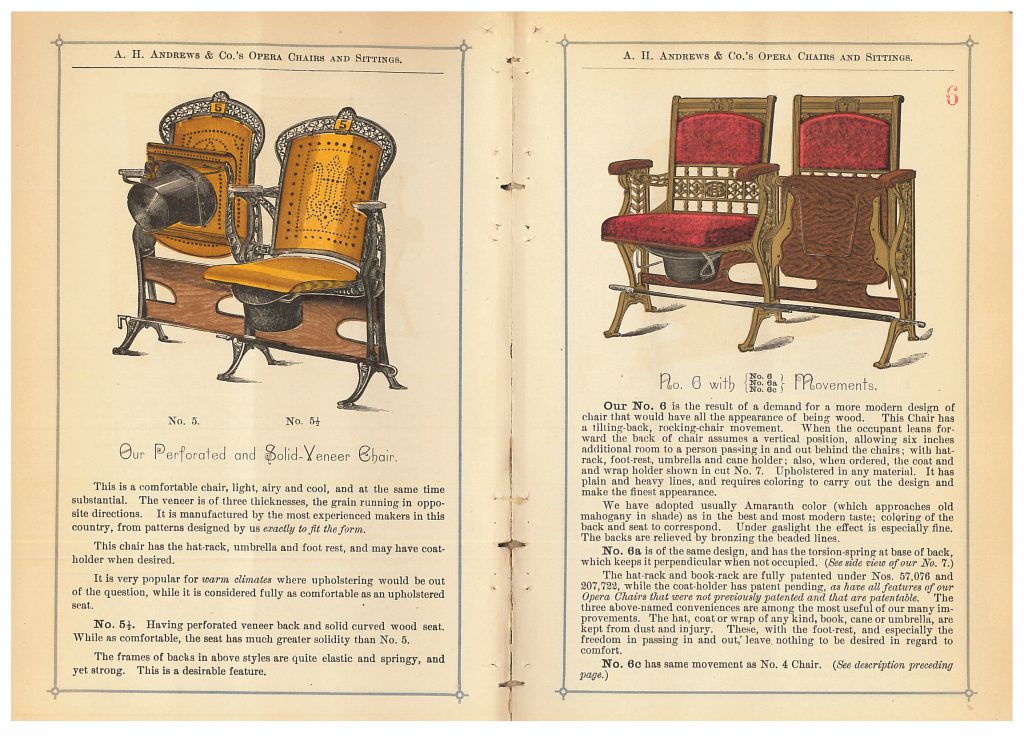
June 16, 2022 Hanging your hat at St. James African Orthodox Church
St. James African Orthodox Church in Roxbury hasn’t changed much since it was built in 1910. While it has been vacant for nearly 10 years, the stained glass windows still reflect the two congregations that worshiped there; the altar and pulpit remain, as does the pipe organ.
However, we only recently took notice of thin suspended wire beneath each seat in St. James’ sanctuary. Known as “hat-racks” they offer a glimpse into a time when men and women almost always wore hats when they went out in public, especially in their “Sunday best.”

St. James’ seats and hat-racks

The Sanctuary of St. James
Hat-racks were patented in the 19th century for attachment to bolted-down seats in theaters, churches and other meeting spaces where men’s hats of various heights could obscure the views of patrons (imagine a top-hat, for example). The rim of the hat slid over the wire frame beneath the seat, suspending the top or bowl of the hat toward the floor. Some chairs were designed to also hide a cane or umbrella, and some had an additional wire to accommodate a coat in front of the seated person. The chairs at St. James appear to have been designed only to accommodate a hat.
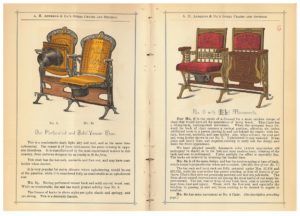

Built in 1910, the church at 50 Cedar Street saw a lot of hats. Hat fashion changed throughout the years, but both congregations – the Norwegian Evangelical Church (1910 – 1955) and St. James African Orthodox Church (1955-2015) – would have worn them and used their hat racks.
What types of hats would have been tucked beneath the seats of the church when the Norwegians built it in 1910? Men were wearing derby hats or bowlers or variations on them, fedoras, Homburgs and Panama hats. Upper class men would wear top hats for special ceremonial occasions. Many Boston photographs from this time show men with straw boaters hats, usually summer wear. A variety of golf caps, flat caps, work caps or Scally caps – usually wool or felt – were standard fare for young men and workers.

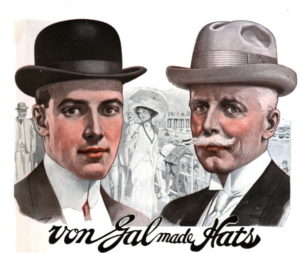
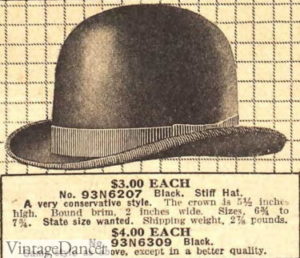
By 1955, when the congregation of St. James African Orthodox Church purchased the church, men were still wearing hats in public places, especially church. At that time they would have been wearing updated Fedoras and similarly brimmed hats like the Tremont, which had a dent on the bowl of the hat, or the Pork Pie, which was flatter and rounder with a recess at the top of the hat. Straw versions of these styles were worn in warmer months. Scally caps or flat caps in wool and cotton persisted, particularly among boys and working men.
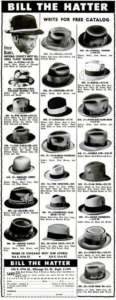
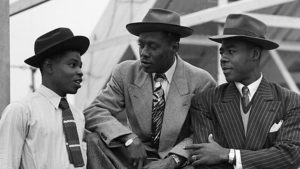
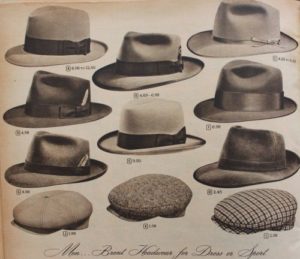
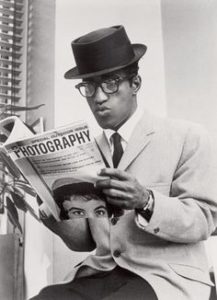
It’s conceivable that women used the church’s hat-racks, but more often than not, women wore their hats in church. Women’s hats were also considerably more varied than men’s and hat-racks were also not designed to hold the varied sizes and shapes of women’s hat forms in over the course of 100 years.

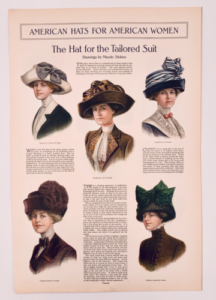
Black churches in particular have a rich and well known tradition of stylish and exuberant women’s hats for Sunday worship, and St. James, whose parishioners emigrated from the Caribbean, may have had their own expressions through style. We offer some general images here of women’s hat styles from each of those time periods as an indication of what was in vogue across the country and in Boston.
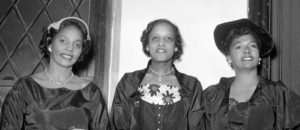
A view ladies posing for the camera at Fisk University circa 1955 in Nashville, Tennessee. (Photo by Bob Grannis/Getty Images)
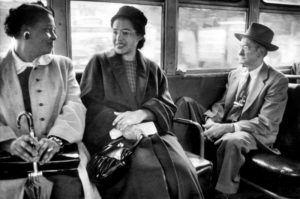
Rosa Parks, 1955

Marian Anderson, 1953
What will happen to the hat-racks at St. James? We’re not sure. If a future user wishes to keep the congregational style seating in the church, they’ll likely survive. If not, we hope that some of these chairs can be retained and incorporated into the church to remind us of its history – and the history of style.
Note: None of the images of fashion or people included here are associated directly with the two congregations that worshipped at 50 Cedar Street. They’re meant to reflect the prevailing styles of the times the two congregations worshipped in the historic church.



